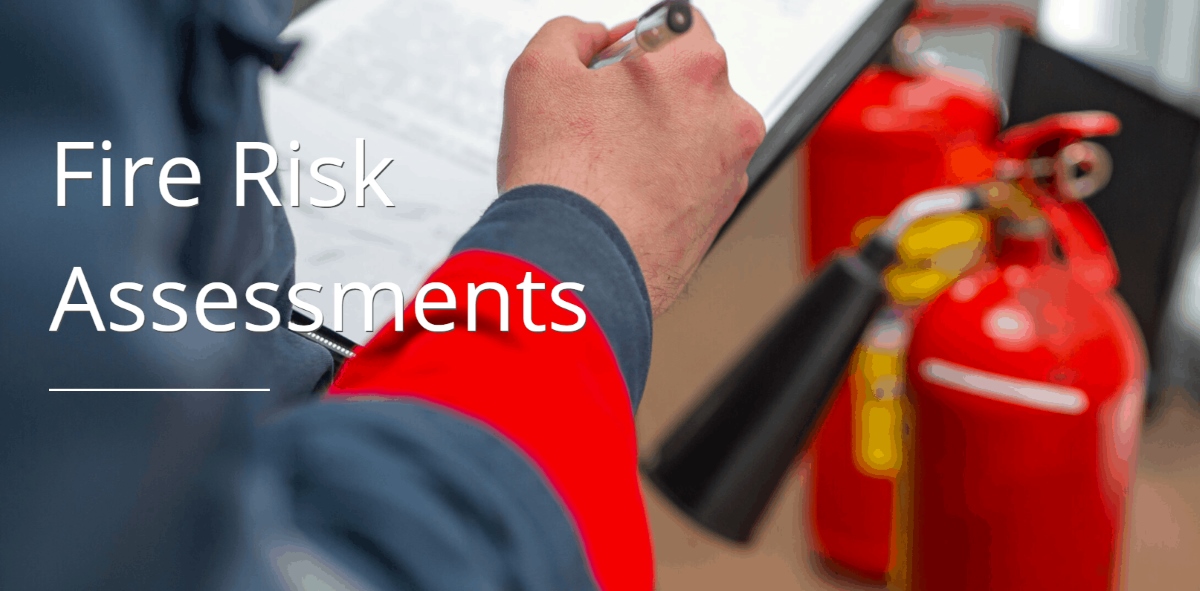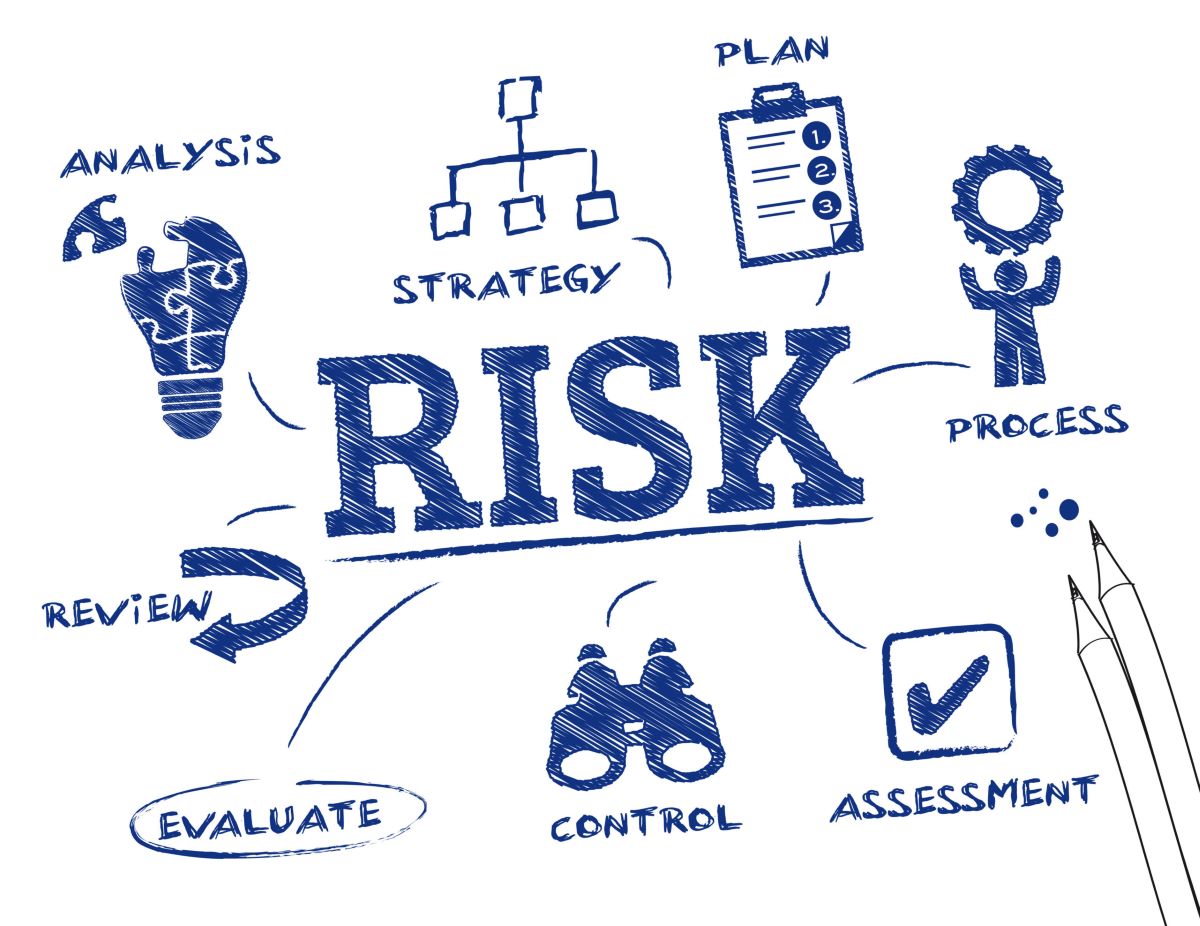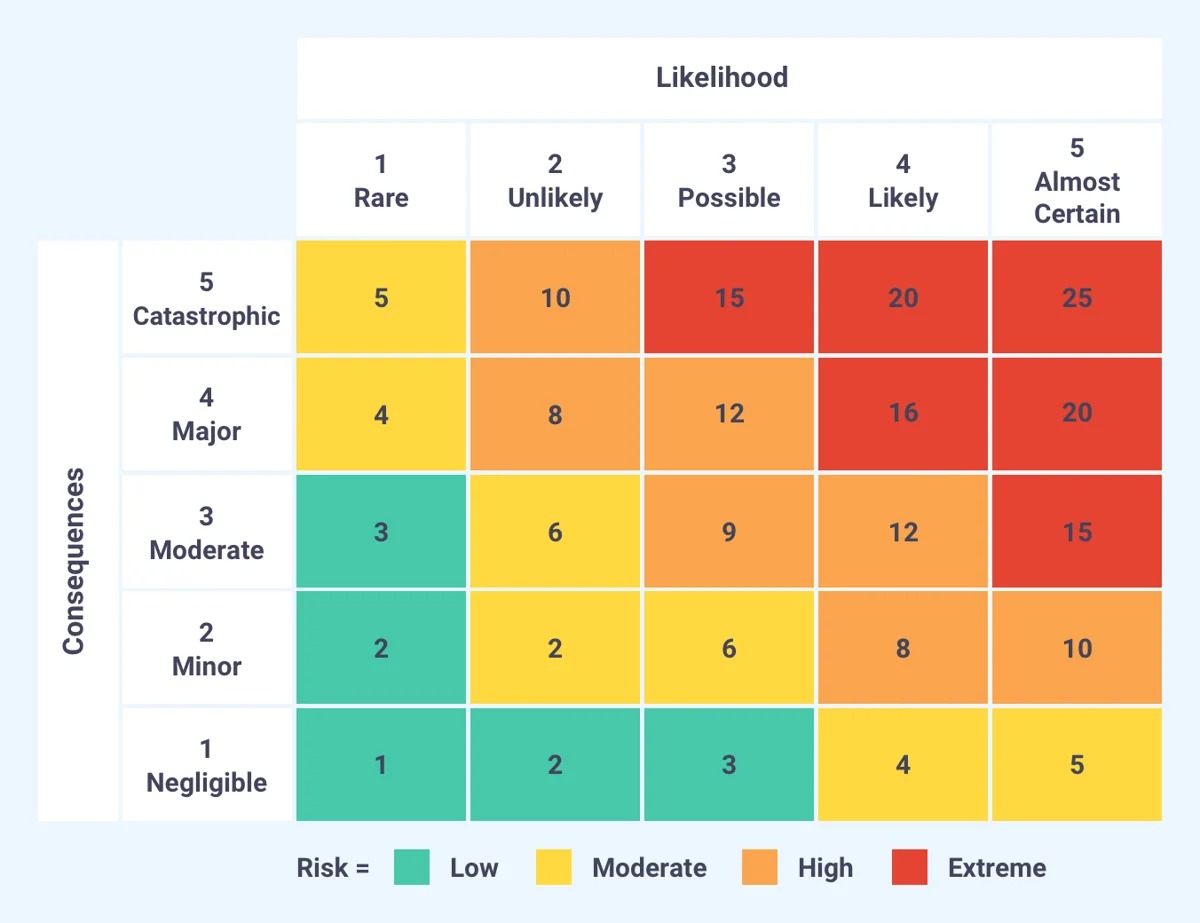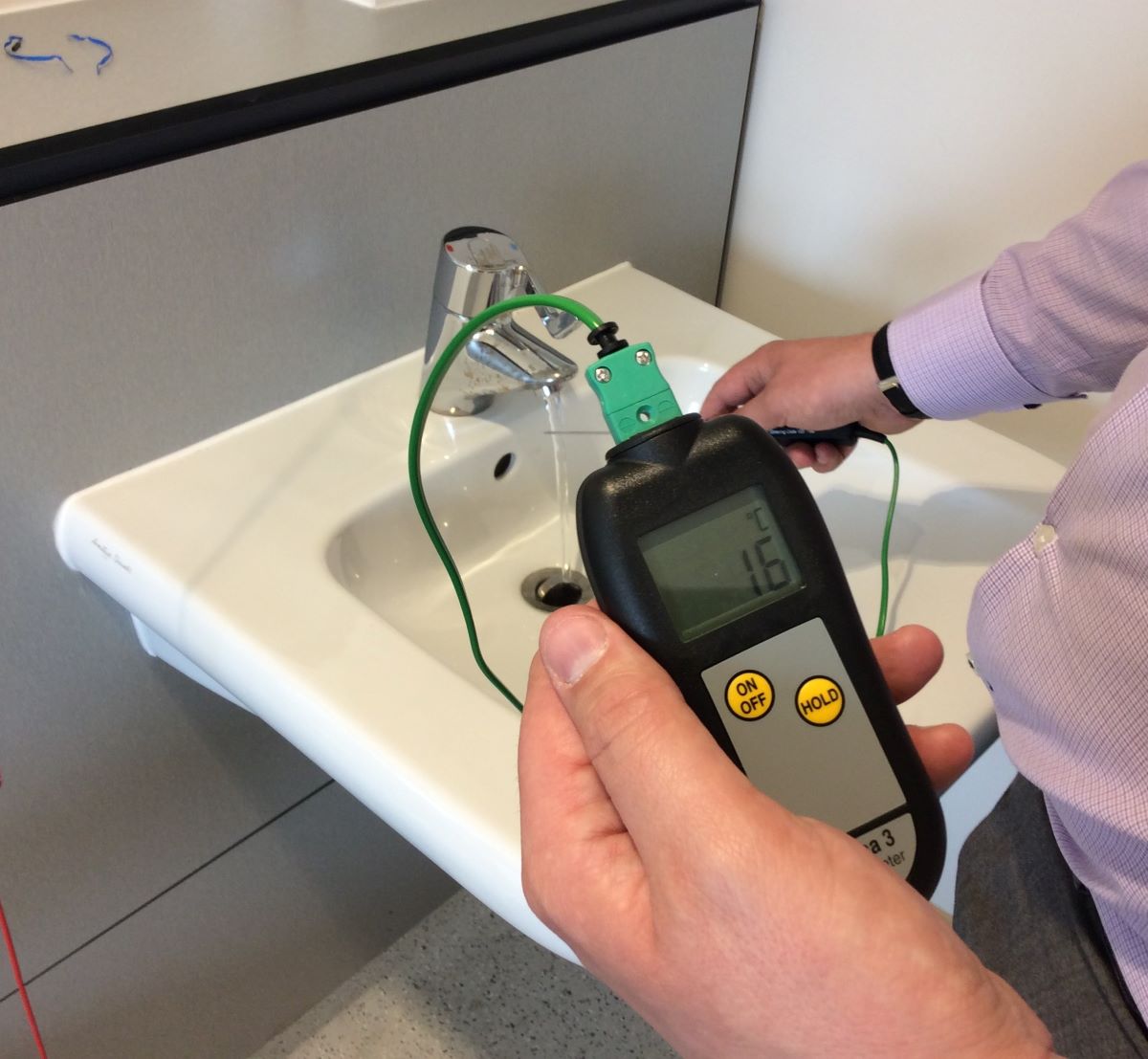

Finance
What Is A Fire Risk Assessment
Published: January 15, 2024
Learn the importance of fire risk assessment in the finance industry. Discover how it helps prevent financial losses and ensures a safe environment for employees and clients.
(Many of the links in this article redirect to a specific reviewed product. Your purchase of these products through affiliate links helps to generate commission for LiveWell, at no extra cost. Learn more)
Table of Contents
Introduction
Fire is a significant risk that can have devastating consequences for both individuals and businesses. In order to mitigate this risk, it is crucial to conduct a fire risk assessment. A fire risk assessment is a systematic evaluation of a property to identify potential fire hazards and assess the level of risk they pose. This assessment helps in determining the adequacy of existing fire safety measures and suggests improvements to enhance the overall fire safety of a building.
The primary objective of a fire risk assessment is to ensure the safety of occupants, visitors, and nearby properties in the event of a fire. By identifying potential fire hazards and evaluating the risks associated with them, appropriate measures can be taken to prevent fires and minimize their impact.
Fire risk assessments are not only essential for the safety of individuals but are also a legal requirement. In most jurisdictions, including business premises, landlords, and property owners have a legal obligation to conduct regular fire risk assessments. Failure to comply with these legal requirements can result in severe penalties and legal consequences.
This article aims to provide a comprehensive understanding of fire risk assessments, including their purpose, legal requirements, and the various steps involved in conducting a thorough assessment. By the end of this article, readers will have a clear understanding of why fire risk assessments are crucial and how to ensure the safety of their properties.
Purpose of a Fire Risk Assessment
The main purpose of a fire risk assessment is to identify potential fire hazards and assess the level of risk they pose. By conducting a systematic evaluation of a property, the assessment aims to ensure the safety of occupants and reduce the risk of fire-related incidents. Here are the key purposes of a fire risk assessment:
- Identify Fire Hazards: The assessment helps in identifying potential fire hazards such as faulty electrical wiring, flammable materials, inadequate storage practices, or blocked fire exits. By recognizing these hazards, appropriate measures can be implemented to eliminate or minimize their risk.
- Evaluate Fire Risks: Once the hazards are identified, the next step is to assess the risks associated with them. This involves considering factors such as the probability of a fire occurring and the potential consequences if it were to happen. By evaluating the risks, priorities can be established, and resources can be allocated effectively.
- Assess Existing Fire Safety Measures: The assessment also involves evaluating the effectiveness of existing fire safety measures in place, such as fire alarms, extinguishers, emergency lighting, and evacuation procedures. This ensures that the current fire safety measures are sufficient and compliant with relevant regulations and standards.
- Recommend Improvements: Based on the findings of the assessment, recommendations are made to improve the overall fire safety of the property. This may involve installing additional fire safety equipment, modifying the layout of the premises, implementing training programs for staff, or improving emergency evacuation procedures.
- Comply with Legal Requirements: Fire risk assessments are a legal requirement in many jurisdictions. By conducting regular assessments, property owners and occupiers can demonstrate their compliance with fire safety regulations. This not only protects the safety of individuals but also helps prevent legal repercussions and potential liability in case of a fire-related incident.
In summary, the purpose of a fire risk assessment is to identify fire hazards, evaluate risks, assess the effectiveness of existing fire safety measures, recommend improvements, and comply with legal requirements. By prioritizing fire safety and implementing appropriate measures, the overall risk of fire-related incidents can be significantly reduced, ensuring the well-being of occupants and the protection of property.
Legal Requirements for Fire Risk Assessments
Fire risk assessments are not only crucial for the safety of individuals and property but are also a legal requirement in many jurisdictions. The specific legal requirements for fire risk assessments may vary depending on the country, region, and type of premises. However, there are several common elements that are typically included in these requirements. Here are the key aspects of legal requirements for fire risk assessments:
- Applicable Legislation: Fire risk assessments are conducted to comply with specific fire safety legislation and regulations applicable to the jurisdiction. It is essential to understand and follow the relevant legislation to ensure that the assessment meets the necessary legal standards.
- Responsibility of Property Owners or Occupiers: In most jurisdictions, the responsibility for conducting fire risk assessments lies with the property owner or occupier. This includes business premises, landlords, property managers, and even homeowners in some cases.
- Regular Assessments: Legal requirements often stipulate the frequency of fire risk assessments. This can range from annual assessments to more frequent intervals depending on the type and use of the premises. Regular assessments ensure that fire safety measures are regularly reviewed and updated.
- Qualified Assessor: The person conducting the fire risk assessment is typically required to possess the necessary qualifications, knowledge, and experience in fire safety. This ensures that the assessment is carried out by competent individuals who can accurately identify hazards and evaluate risks.
- Documentation and Record Keeping: Legal requirements may mandate the documentation and record keeping of fire risk assessments. This includes maintaining records of the assessment, recommendations, and any actions taken to address identified hazards and risks.
- Review and Updating: Fire risk assessments are not a one-time requirement. Regular reviews and updates are necessary to ensure that the assessment remains relevant and up to date with any changes in the premises or regulations.
Failure to comply with legal requirements for fire risk assessments can have serious consequences. These can include fines, penalties, legal action, invalidated insurance coverage, and most importantly, the endangerment of lives and property. It is crucial for property owners and occupiers to be aware of and adhere to the specific legal requirements in their jurisdiction to ensure the safety and compliance of their premises.
It is worth noting that legal requirements for fire risk assessments may differ between residential and commercial premises, as well as in specialized settings such as healthcare facilities or high-risk industrial environments. Consulting with local fire authorities, building control departments, or fire safety professionals can provide valuable guidance and insights on the specific legal requirements applicable to your premises.
Identifying Fire Hazards
The first step in conducting a fire risk assessment is to identify potential fire hazards within the premises. A fire hazard is any condition, material, or activity that has the potential to cause or contribute to the ignition or spread of a fire. Identifying these hazards is crucial for effective fire prevention and risk assessment. Here are some common fire hazards to consider:
- Electrical Hazards: Faulty wiring, overloaded electrical circuits, and inadequate maintenance of electrical equipment can pose a significant fire hazard. This includes items such as old or damaged wiring, improperly installed outlets, and malfunctioning appliances.
- Flammable Materials: Materials that can catch fire easily, such as aerosol cans, solvents, gasoline, and cleaning agents, should be properly stored and handled. Improper storage or disposal of flammable liquids and substances increases the risk of fire.
- Heating Sources: Heating equipment, such as furnaces, boilers, space heaters, and chimneys, can be potential sources of fire if not properly maintained or used. Poorly maintained heating systems and improper ventilation can lead to the accumulation of combustible materials and increase the risk of fire.
- Open Flames: Candles, smoking materials, and open flame devices can cause fires if not managed safely. Unattended candles or improperly discarded smoking materials can easily ignite surrounding materials, leading to a fire.
- Cooking Facilities: Commercial kitchens or residential cooking areas can be high-risk areas due to the presence of open flames, hot surfaces, and cooking oils. Grease buildup, unattended cooking, and improper storage of flammable materials can result in fires.
- Combustible Storage: Improper storage of combustible materials, including paper, cardboard, and packaging materials, can increase the risk of fire. Inadequate separation between storage areas and potential ignition sources can also contribute to the spread of fire.
- Blocked Fire Exits: Fire exits that are obstructed, locked, or otherwise inaccessible pose a significant risk during an emergency. It is essential to ensure that fire exits are unobstructed, well-marked, and easily accessible at all times.
- Ignition Sources: Any potential heat source, such as hot surfaces, sparks, or open flames, should be considered as potential ignition sources. This includes electrical equipment, machinery, welding operations, and even static electricity.
When identifying fire hazards, it is crucial to consider the specific characteristics and activities within the premises. Every property is unique, and potential fire hazards may vary based on its use, occupancy, and layout. It is recommended to involve employees, tenants, or other stakeholders in the identification process as they may have firsthand knowledge of hazards specific to their areas of work or residence.
Once the fire hazards have been identified, they should be documented and assessed for their potential risk in the next step of the fire risk assessment process. This evaluation of risks will help prioritize actions and determine appropriate measures to mitigate or eliminate the identified hazards.
Evaluating Fire Risks
After identifying the potential fire hazards in a property, the next step in a fire risk assessment is to evaluate the risks associated with these hazards. Risk evaluation involves assessing the likelihood of a fire occurring and the potential consequences if it were to happen. By evaluating the fire risks, priorities can be established, resources can be allocated effectively, and appropriate fire safety measures can be implemented. Here are the key factors to consider when evaluating fire risks:
- Likelihood of Fire: Assessing the likelihood of a fire occurring involves considering various factors such as the presence of ignition sources, the nature of activities conducted in the premises, the condition of electrical systems, and the effectiveness of fire prevention measures. The goal is to determine the probability of a fire event based on the identified hazards.
- Consequences of Fire: Evaluating the potential consequences of a fire is equally important. This includes assessing the impact on the safety of occupants, the spread of fire, the potential damage to property, the presence of hazardous materials, the disruption of business operations, and the possibility of injury or loss of life. The severity of consequences helps determine the level of risk associated with the identified hazards.
- Vulnerability of Occupants: Consider the vulnerability of the building occupants, including employees, tenants, visitors, and any individuals who may have limited mobility or require special assistance during an evacuation. Those who are more susceptible to the effects of fire or have difficulties with evacuation may require additional fire safety measures.
- Impact on Surrounding Properties: Evaluate the potential impact of a fire on neighboring properties or the environment. This includes considering the proximity of other buildings, the presence of shared structures, the potential spread of fire, and the effectiveness of fire safety measures in place.
- Time of Detection and Intervention: Assess the time it would take to detect a fire and initiate appropriate response actions. This includes evaluating the effectiveness of fire detection systems, such as smoke alarms and sprinkler systems, and the availability and training of personnel to respond to a fire incident promptly.
The evaluation of fire risks is subjective and requires professional judgment. It is important to consider the unique circumstances of the property and the surrounding environment. By understanding the likelihood and consequences of fire events, appropriate control measures can be implemented to reduce the identified risks to an acceptable level.
It is worth noting that the level of risk associated with specific hazards may vary. Some hazards may pose a high risk due to their potential likelihood and severe consequences, while others may pose a lower risk. By prioritizing the identified risks, property owners can allocate resources effectively and focus on implementing appropriate fire safety measures to address the high-risk areas first.
Regular review and reassessment of fire risks is essential, as changes in the property, occupancy, or legislation may alter the level of risk. By continually monitoring and evaluating fire risks, property owners can ensure that their fire safety plans and measures remain effective and up to date.
Assessing Existing Fire Safety Measures
As part of a comprehensive fire risk assessment, it is important to evaluate the effectiveness of existing fire safety measures that are already in place within a property. This assessment helps determine whether the current safety measures are sufficient and compliant with applicable fire safety regulations. Here are the key aspects to consider when assessing existing fire safety measures:
- Fire Detection and Alarm Systems: Evaluate the functionality and coverage of fire detection and alarm systems within the premises. This includes smoke detectors, heat detectors, manual call points, and fire alarm panels. Ensure that the systems are regularly tested, maintained, and in compliance with relevant standards.
- Fire Suppression Systems: Assess the presence and effectiveness of fire suppression systems, such as sprinklers, fire extinguishers, and fire blankets. Verify that they are properly installed, maintained, and accessible. Confirm that the type and capacity of the fire suppression systems are appropriate for the specific hazards present.
- Emergency Lighting: Check the functionality and coverage of emergency lighting systems. Emergency lighting provides illumination in the event of a power failure, ensuring safe evacuation. Evaluate whether emergency lighting units are properly installed, tested, and maintained to provide adequate visibility during an emergency.
- Escape Routes and Exits: Review the layout and condition of escape routes and exits. Check that they are unobstructed, clearly marked, and wide enough to accommodate the expected number of occupants. Assess whether there are enough exits to facilitate a swift and orderly evacuation in case of a fire.
- Fire Safety Signage: Ensure that fire safety signage is properly installed and visible, indicating escape routes, emergency exits, fire extinguishers, and other essential fire safety information. Evaluate whether the signage is clear, up to date, and compliant with relevant regulations.
- Training and Education: Consider the fire safety training and education provided to employees, tenants, and occupants of the building. Assess whether fire safety training programs are in place, including fire drills and evacuation procedures. Verify that staff members are adequately trained to respond to a fire emergency.
- Maintenance and Testing: Review maintenance records and documentation of regular inspections for fire safety equipment and systems. Check that testing and maintenance activities are conducted as required and that any issues identified during inspections have been promptly addressed.
- Documentation and Compliance: Verify that relevant fire safety documentation is in place and up to date. This may include fire risk assessment reports, fire safety logbooks, evacuation plans, and records of maintenance and testing. Confirm that the property is in compliance with applicable fire safety regulations.
During the assessment, it is important to document any deficiencies or non-compliance discovered in the existing fire safety measures. These findings will help in formulating recommendations for improvement in the next stage of the fire risk assessment process. It is crucial to address any identified gaps or issues to ensure the effective protection of life and property.
Assessing existing fire safety measures is an ongoing process that should be regularly reviewed and updated to ensure continued compliance and effectiveness. Changes in the property, occupancy, or regulations may necessitate modifications to the existing fire safety measures or the implementation of additional measures to enhance the overall fire safety of the premises.
Recommendations for Improving Fire Safety
Based on the findings of a fire risk assessment, recommendations are made to improve the overall fire safety of a property. These recommendations aim to address any identified hazards, mitigate risks, and enhance the effectiveness of fire safety measures. Here are some key areas to consider when making recommendations for improving fire safety:
- Hazard Mitigation: Address the specific fire hazards identified during the assessment. This may involve implementing measures to eliminate or reduce the likelihood of a hazard occurring. For example, upgrading faulty wiring, replacing flammable materials with less combustible alternatives, or implementing proper storage practices for hazardous substances.
- Fire Detection and Alarm Systems: Consider upgrading or expanding the existing fire detection and alarm systems to ensure comprehensive coverage. This may involve installing additional smoke detectors, heat detectors, or manual call points in areas where the risk of fire is high. Regular testing and maintenance of these systems should also be emphasized.
- Fire Suppression Systems: Evaluate the need for installing or upgrading fire suppression systems based on the identified hazards. This may include the installation of sprinkler systems, fire extinguishers, or fire blankets in specific areas. Ensure that the chosen suppression systems are suitable for the hazards present and comply with relevant standards.
- Escape Routes and Exits: Improve the layout and accessibility of escape routes and exits. This may involve widening exits, providing clear signage, improving lighting along escape routes, or installing additional emergency exits to accommodate the expected occupancy. Ensure that all exit doors are easy to open, remain unobstructed, and lead to a safe outdoor location.
- Training and Education: Enhance fire safety training programs and education for employees, tenants, and occupants. Conduct regular fire drills to ensure familiarity with evacuation procedures. Provide clear instructions on how to respond to a fire emergency, including proper use of fire safety equipment and evacuation routes. Consider appointing fire marshals or wardens to assist during evacuations.
- Maintenance and Testing: Establish a regular maintenance and testing schedule for all fire safety equipment and systems. Ensure that inspections are conducted by qualified professionals and documented appropriately. Promptly address any issues or defects identified during inspections to maintain the functionality of fire safety measures.
- Continual Review and Updating: Regularly review and update fire safety measures based on changes in occupancy, regulations, or the property itself. Stay informed about emerging fire safety technologies and best practices. Engage with local fire authorities or fire safety professionals to seek guidance and ensure ongoing compliance with relevant standards.
It is important to prioritize recommendations based on the level of risk associated with identified hazards. High-risk areas should receive immediate attention, while lower-priority recommendations can be implemented over time. Regular monitoring and reassessment of fire safety measures will help ensure that the improvements are effective and continue to meet evolving needs.
Engaging with professionals in fire safety or consulting with fire authorities can provide valuable insights and guidance in developing specific recommendations tailored to the unique needs of the property.
By implementing the recommendations derived from a fire risk assessment, property owners and occupiers can significantly enhance the fire safety of their premises, reducing the risk of fire-related incidents and protecting the well-being of occupants and property.
Emergency Evacuation Procedures
Having well-defined and practiced emergency evacuation procedures is essential for the safety of occupants during a fire incident. Effective evacuation procedures minimize the risk of injury or loss of life by ensuring a swift and orderly evacuation. Here are the key elements to consider when developing emergency evacuation procedures:
- Escape Routes: Identify and clearly mark primary and secondary escape routes throughout the property. These routes should lead occupants to safe outdoor locations away from the building. Ensure that escape routes are unobstructed, well-lit, and wide enough to accommodate the expected number of occupants.
- Assembly Points: Designate specific assembly points at a safe distance from the building where occupants should gather after evacuating. Assembly points should be easily accessible and away from emergency vehicle access routes to avoid interference with rescue operations.
- Alarm System: Install a reliable fire alarm system that can quickly alert occupants to evacuate the premises. The alarm system should be audible throughout the building and trigger an immediate response from occupants, indicating the need for evacuation.
- Emergency Lighting: Ensure that emergency lighting is in place along escape routes and exits. Emergency lighting provides visibility during power outages or low lighting conditions, helping occupants navigate the evacuation routes safely.
- Communication: Establish a clear communication system to relay vital information during an emergency. This can include public address systems, intercoms, or emergency communication devices. Provide instructions and updates to occupants, emphasizing the importance of a calm and orderly evacuation.
- Training and Education: Conduct regular fire drills to familiarize occupants with evacuation procedures. Train employees, tenants, and residents on how to respond to a fire emergency, including the location of escape routes, assembly points, and how to assist individuals with disabilities or mobility challenges.
- Special Considerations: Take into account the needs of individuals with disabilities or those who may require assistance during an evacuation. Develop specific protocols for safely evacuating these individuals, including designated evacuation buddies or equipment for mobility support.
- Emergency Services Coordination: Coordinate with local emergency services to ensure they are aware of your property’s emergency evacuation procedures. Share any pertinent information such as access points, building plans, and contact details to facilitate their response during an emergency.
- Regular Practice and Review: Continuously practice and evaluate the effectiveness of emergency evacuation procedures. Conduct regular drills to maintain familiarity and identify areas for improvement. Consider feedback from drill participants and update procedures accordingly.
Emergency evacuation procedures should be clearly documented and prominently displayed throughout the property. Post evacuation plans in common areas, corridors, and near exit doors to ensure occupants can easily access and follow the procedures during an emergency.
It is essential to regularly review and update emergency evacuation procedures to account for any changes in the property, occupancy, or regulations. Staying up to date with local fire safety codes and best practices will help ensure that evacuation procedures remain effective and in compliance with current standards.
By establishing and practicing comprehensive emergency evacuation procedures, property owners and occupants can significantly enhance the safety of everyone within the building during a fire emergency.
Record Keeping and Review
Record keeping and regular review are critical aspects of maintaining effective fire safety practices within a property. Keeping accurate records and conducting periodic reviews of fire risk assessments, fire safety measures, and emergency procedures ensure ongoing compliance and continuous improvement. Here are the key considerations for record keeping and review:
- Fire Risk Assessment Documentation: Maintain detailed records of fire risk assessments, including assessment reports, findings, and recommendations. These documents serve as a reference for future reviews and help track the progress of implemented safety measures.
- Maintenance and Testing Records: Keep records of all maintenance and testing activities related to fire safety equipment and systems. This includes details of inspection dates, performed procedures, identified issues, and any corrective actions taken. These records demonstrate compliance with maintenance requirements and provide evidence of regular equipment servicing.
- Emergency Evacuation Drills: Document records of regular emergency evacuation drills, including the dates, number of participants, and observations. These records help identify areas for improvement, gauge readiness, and determine the effectiveness of evacuation procedures and staff training.
- Training and Education: Maintain records of fire safety training sessions conducted for employees, tenants, and occupants. This includes attendance records, training materials, topics covered, and any certifications or qualifications attained. These records demonstrate the commitment to fire safety training and ensure that training remains up to date.
- Incident Reports: Document any fire-related incidents or near misses that occur within the property. Incident reports should include details such as the date, time, nature of the incident, actions taken, and any lessons learned. These reports serve as valuable references for future risk assessments and highlight areas that may require additional attention.
- Review and Compliance Schedule: Establish a schedule for periodic reviews of fire safety measures, such as fire risk assessments, evacuation procedures, and maintenance records. Determine an appropriate frequency for these reviews based on the property type, occupancy, and local regulations. Regularly revisit the fire risk assessment to ensure it remains up to date and reflective of the current hazards and risks.
- Engagement with Fire Safety Professionals: Seek guidance and engage with fire safety professionals, local fire authorities, or building control departments for insights and recommendations. Regularly consult with professionals to ensure ongoing compliance with fire safety regulations and best practices.
- Continuous Improvement: Use the information gathered from record keeping and reviews to identify areas for improvement in fire safety measures. Implement necessary changes and monitor their effectiveness through subsequent reviews. Continuously strive to enhance fire safety practices and ensure the safety of occupants and the property.
Well-maintained and accurate records help demonstrate compliance with fire safety regulations and serve as crucial references for future assessments and reviews. They provide valuable insights into the history of fire safety measures and enable property owners and managers to track progress in mitigating risks and enhancing fire safety.
Regular reviews of fire safety measures and thorough record keeping ensure that safety practices remain up to date and compliant. By actively monitoring and continuously improving fire safety procedures, property owners and occupants can effectively reduce the risk of fire-related incidents and safeguard the well-being of all individuals within the premises.
Conclusion
Fire risk assessments are essential for ensuring the safety of occupants and the protection of property. By systematically identifying fire hazards, evaluating risks, and assessing existing fire safety measures, property owners and occupiers can take proactive steps to prevent fires and minimize their impact.
Throughout this article, we have explored the purpose of fire risk assessments in detail, emphasizing their role in compliance with legal requirements and the importance of conducting regular assessments. By identifying fire hazards and evaluating risks, property owners and occupiers can prioritize areas that require immediate attention and allocate resources effectively.
We have also discussed the significance of assessing existing fire safety measures and making recommendations for improvement. By ensuring the functionality of fire alarms, suppression systems, escape routes, and emergency lighting, the overall fire safety of a property can be significantly enhanced.
Emergency evacuation procedures are vital for a safe and orderly evacuation during a fire incident. Establishing clear escape routes, designated assembly points, and effective communication systems are crucial elements of a well-prepared emergency response plan.
Record keeping and regular review are essential for maintaining compliance with fire safety regulations and ensuring continuous improvement. By documenting fire risk assessments, maintenance records, training sessions, incident reports, and conducting periodic reviews, property owners can track progress, identify areas for improvement, and demonstrate their commitment to fire safety.
In conclusion, prioritizing fire risk assessments, implementing recommended improvements, and maintaining comprehensive emergency evacuation procedures are indispensable for promoting fire safety within a property. By mitigating risks, complying with legal requirements, and continuously reviewing and improving fire safety measures, property owners and occupiers can protect lives, prevent property damage, and contribute to a safer environment for all.














